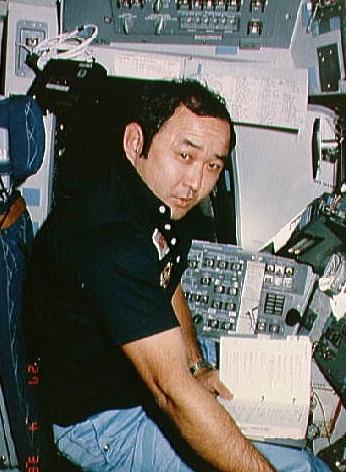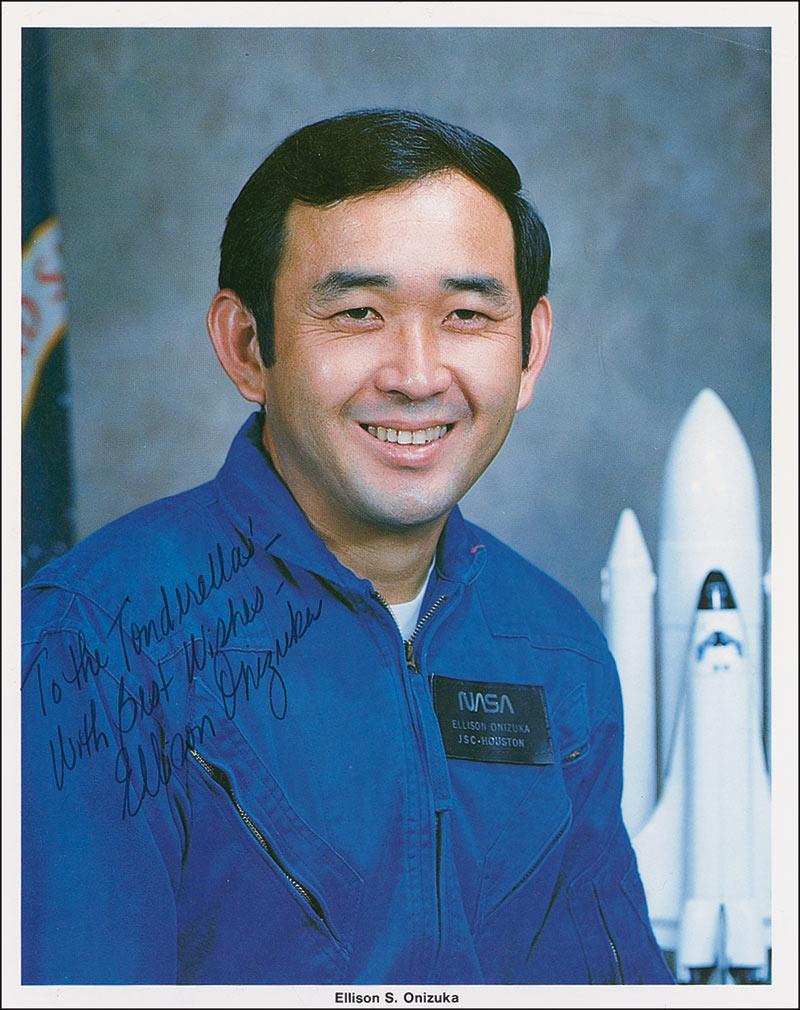Ellison Onizuka (Ellison Shoji Onizuka)

Ellison Onizuka was selected for the astronaut program in January 1978, and completed one year of evaluation and training in August 1979. Later, he worked in the experimentation team, Orbiter test team, and launch support crew at Kennedy Space Center for the STS-1 and STS-2. At NASA, he worked on the Shuttle Avionics Integration Laboratory (SAIL) test and revision software team. Onizuka’s first space mission took place on January 24, 1985, with the launch of mission STS 51-C on Space Shuttle Discovery, the first space shuttle mission for the Department of Defense. He was accompanied by Commander Ken Mattingly, Pilot Loren Shriver, fellow Mission Specialist James Buchli, and Payload Specialist Gary E. Payton. During the mission, he was responsible for the activities of the primary payloads, which included the unfolding of the Inertial Upper Stage (IUS) surface. After 48 orbits around the Earth, Discovery landed at Kennedy Space Center on January 27, 1985. He had completed a total of 74 hours in space.
Ellison Onizuka was assigned to the mission STS 51-L on the Space Shuttle Challenger that took off from Kennedy Space Center at 11:38:00 EST (16:38:00 UTC) on January 28, 1986. The other Challenger crew members were commander Dick Scobee, pilot Michael J. Smith, mission specialists Ronald McNair, Judith Resnik, and payload specialists Gregory Jarvis and Christa McAuliffe. It was destroyed when a leaking solid rocket booster ruptured the fuel tank 73 seconds after launch. All seven crew members were killed. Following the Challenger disaster, examination of the recovered vehicle cockpit revealed that three of the crew members Personal Egress Air Packs were activated: those of Onizuka, mission specialist Judith Resnik, and pilot Michael Smith. The location of Smith’s activation switch, on the back side of his seat, means that either Resnik or Onizuka could have activated it for him. This is the only evidence available from the disaster that shows Onizuka and Resnik were alive after the cockpit separated from the vehicle. However, if the cabin had lost pressure, the packs alone would not have sustained the crew during the two-minute descent. Ellison Onizuka was buried at the National Memorial Cemetery of the Pacific in Honolulu, Hawaii. At the time of his death, he held the rank of Lieutenant Colonel. Posthumously, he was promoted to the rank of Colonel.
Born
- June, 24, 1946
- USA
- Kealakekua, Hawaii
Died
- January, 28, 1986
- USA
- Cape Canaveral, Florida
Cause of Death
- Challenger explosion
Cemetery
- National Memorial Cemetery of the Pacific
- Honolulu, Hawaii
- USA



